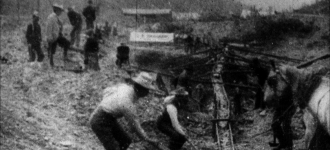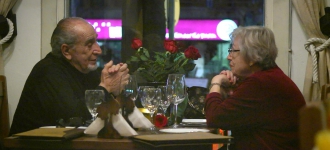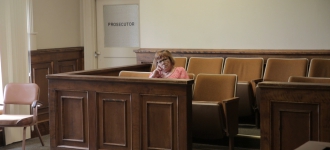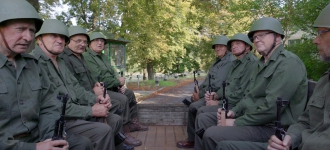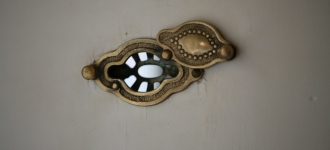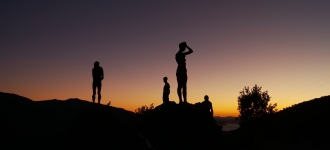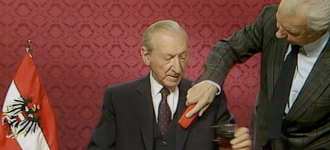Since the Lumière brothers’ first shorts capturing an arriving train, workers leaving a factory, and a baby eating, traces of light on film have turned mundane events into lasting records that shape our image of the past. What goes on record is remembered, but neither the recording nor the remembering are what stands out in the equation linking the past and its images.
The section, “Shapes of Memory”, surveys the various ways of addressing tangible traces of the past through films that explore its multifarious and contested nature. This section includes documentaries that engage with the complex relationship between the record and its meaning as seen through the idea of archive—be it a collection of disposed and rediscovered nitrate prints from the 1900s that depict a former gold rush town on the Yukon river (Dawson City: Frozen Time), or more recent footage that reconstructs the public personae of the notorious Austrian diplomat and politician, Kurt Waldheim, who has been challenged by his wartime past (Waldheim Waltz). Our understanding of large-scale political transformations gains new insights when (re)constructed through personal stories—especially those that feature contested or mutually exclusive narratives—as demonstrated by the films on the 1968 occupation of Czechoslovakia, the post-socialist transformation in Hungary, and the legacy of the war in Laos (Occupation ’68, A Country Divided, The Remnants).
Emotions are powerful anchors that affect and shape interpretation—be it of decades of personal relationships, or family memories tightly intertwined with social changes (La Flor de la Vida, The other side of everything). The merging of private and political also transpires in the seemingly, very personal story of Lindy Lou (Lindy Lou, Juror Number 2), a one-time juror haunted by a decision she partook in twenty years ago. Returning to her fellow jurors, with whom she shared a moment of omnipotent power over another person’s life, she questions both the past and her decision. In this film, as in the other works in this section, we see everyone is fighting their own battles with the ghosts of the past. In a reimagined visual form, the cinematic translation of history into memories opens up a new dimension of seeing, and raises questions about power and the responsibility of filmmaking itself.
Oksana Sarkisova
Festival Director, Program Curator
| Papp Gábor Zsigmond • Hungary • 2017 • 90min • Hungarian | Bill Morrison • USA • 2016 • 120min • English | Claudia Abend, Adriana Loeff • Uruguay • 2017 • 84min • Spanish |
| Florent Vassault • France • 2016 • 85min • English | Stephan Komandarev, Marie Elisa Scheidt, Linda Dombrovszky, Magdalena Szymkow, Evdokia Moskvina • Slovakia, Czech Republic, Hungary, Bulgaria • 2018 • 130min • Czech, Russian, Polish, Bulgarian, Hungarian, German | Mila Turajlic • Serbia, France, Qatar • 2017 • 104min • Serbian |
| Paolo Barberi, Riccardo Russo • Italy, Switzerland • 2017 • 72min • Lao, English | Almudena Carracedo, Robert Bahar • Spain • 2018 • 95min • Spanish | Ruth Beckermann • Austria • 2018 • 93min • German, English, French |


